More results...
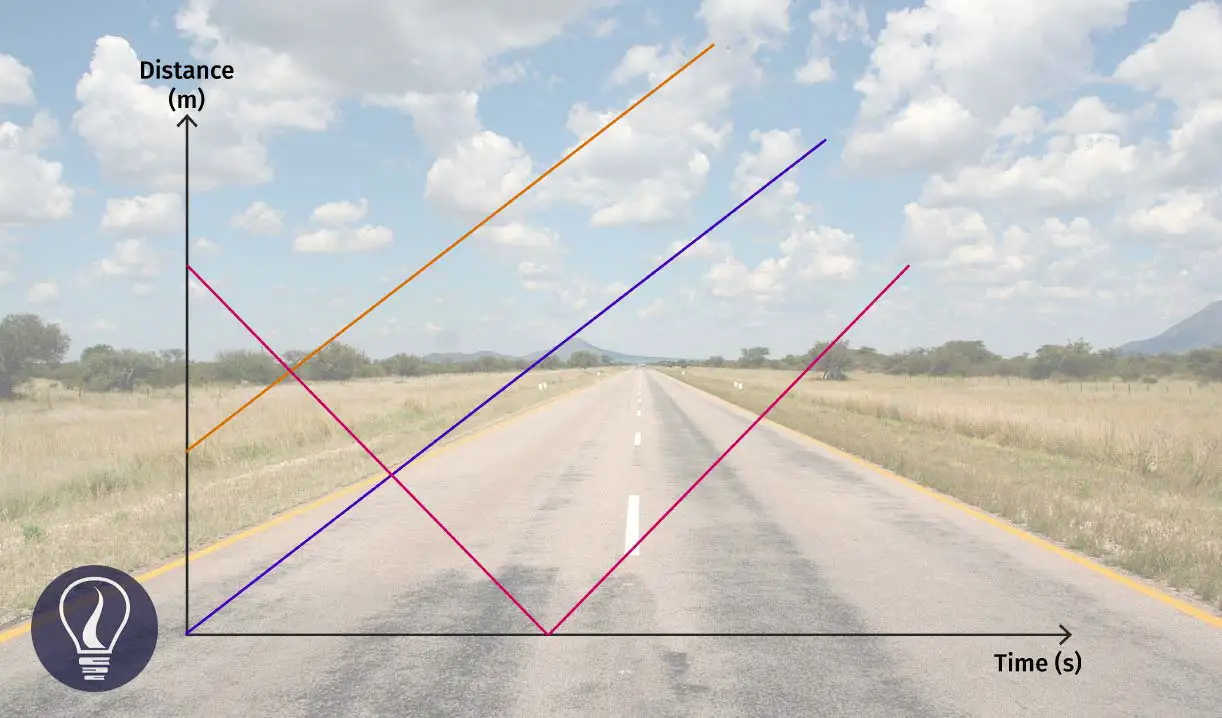

A distance-time graph is obtained when the change in distance of an object is plotted against time. It shows the variation of the distance of an object over time with respect to the observer. From a distance-time graph, we can obtain how far the object has traveled and the speed of the object.
First, we measure the distance of the object with respect to the observer, at given intervals of time. Then the graph is plotted by taking time as the independent variable (x-axis) and the distance as the dependent variable (y-axis). The distance of the object at any given time is shown by the y coordinates of the graph. The slope of a distance-time graph gives the speed of the object.
Since the distance is a scalar, we only consider the magnitude of the distance and not the direction of the object. We can plot distance vs. time graphs for objects at rest or objects that show any kind of motion like objects with constant velocity, objects with constant speed, and objects with constant acceleration or de-acceleration.
Let's assume that there are two objects of A and B. A is at 4 m distance from the observer and B is at 8 m from the observer. Both objects are at rest.
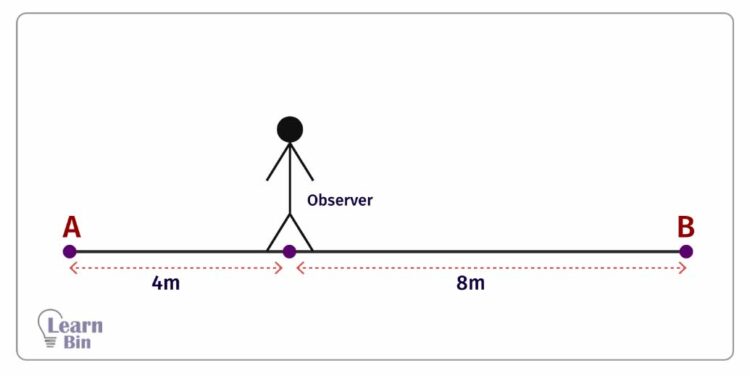
| Time (s) | Distance (m) | |
| Object A | Object B | |
| 0 | 4 | 8 |
| 1 | 4 | 8 |
| 2 | 4 | 8 |
| 3 | 4 | 8 |
| 4 | 4 | 8 |
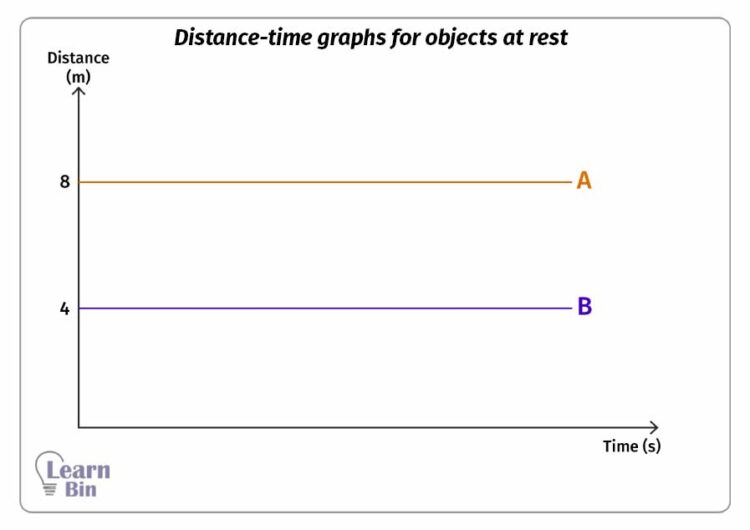
The distance-time graph of an object at rest is a straight line parallel to the x-axis. Therefore, the slope is zero. That means the Speed of the object is zero.
The speed of an object is the rate of the change of the distance of the object. If the speed is constant, that means at any given period of time, the change of distance is the same. Let's assume that there are three objects of A B and C, that are moving at constant speeds.
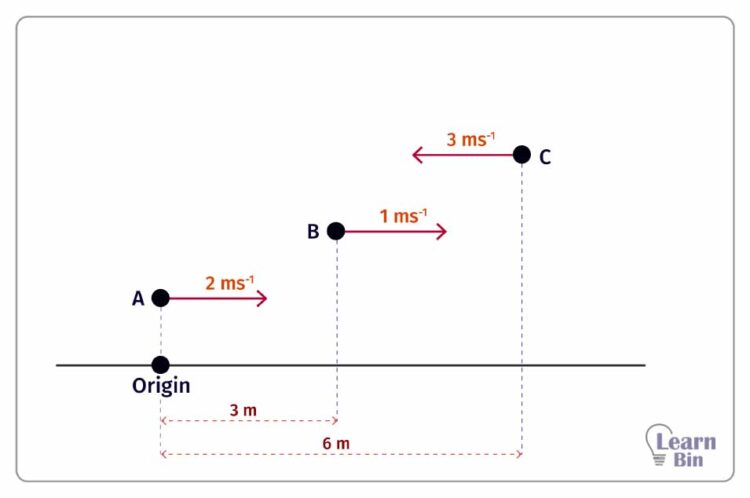
Using motion equations we can find the distance of the object at each second. Objects A and B are moving away from the origin point (observer). Therefore, the distance between objects A and B increases with time. Object C is moving towards the origin (observer). Therefore, at first, the distance is decreasing and then the distance is increasing when the object has passed the observer.
| Time (s) | Distance (m) | ||
| Object A | Object B | Object C | |
| 0 | 0 | 3 | 6 |
| 1 | 2 | 4 | 3 |
| 2 | 4 | 5 | 0 |
| 3 | 6 | 6 | 3 |
| 4 | 8 | 7 | 6 |
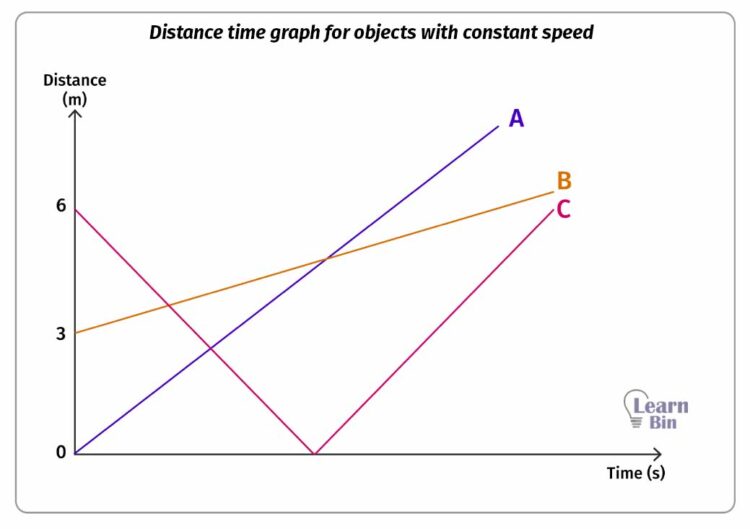
The slope of each graph gives the velocity of each object. The slope of the graph can be found as follows.

The velocity of an object is the rate of the change of the displacement of the object. If the velocity of the object is constant, that means at any given period of time, the change of displacement of the object is the same. Let's assume that there are three cars A B and C, that are moving at constant velocities.
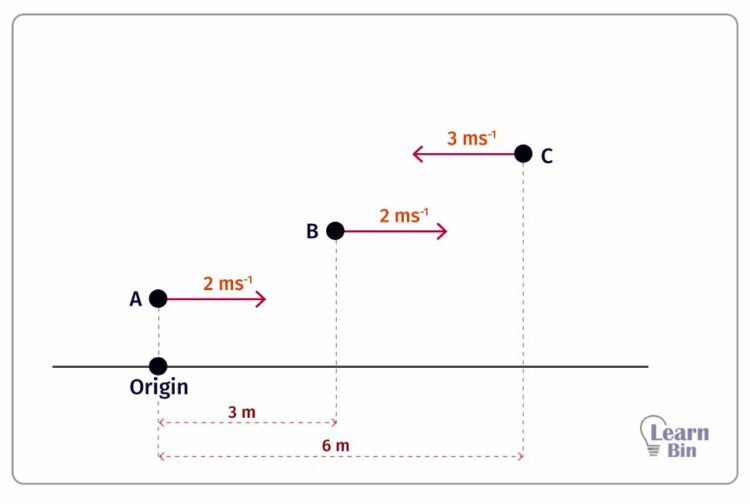
Using motion equations, we can find the displacement of the object at each second. Objects A and B are moving away from the origin point (observer). Therefore, the displacement of objects A and B are increasing with time. Object C is moving towards the origin (observer). Therefore, at first, the displacement is decreasing and then the displacement is increasing when the object has passed the observer.
| Time (s) | Distance / Displacement (m) | ||
| Object A | Object B | Object C | |
| 0 | 0 | 3 | 6 |
| 1 | 2 | 4 | 3 |
| 2 | 4 | 5 | 0 |
| 3 | 6 | 6 | 3 |
| 4 | 8 | 7 | 6 |
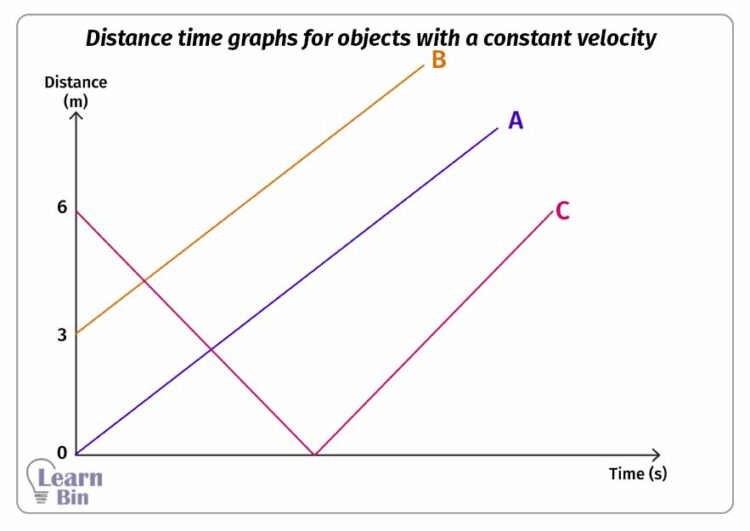
As in speed-time graphs, we can find the velocity of the object using the slope of the graph.
The acceleration of an object is the rate of change of velocity with respect to time. If the object is increasing its velocity, it is called acceleration. If the object is decreasing the velocity with time, it is called a de-acceleration. Let's assume that there are three cars A B and C, that are moving at constant acceleration. They start moving in stillness.
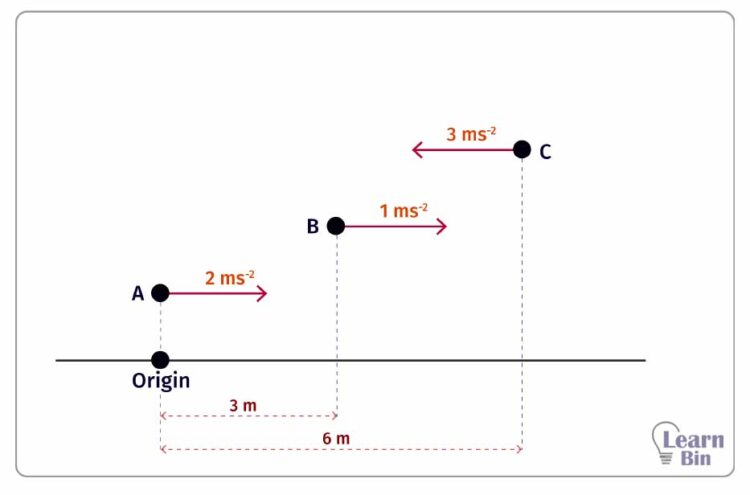
Using motion equations, we can find the displacement of the object at each second. The distance of the object can be found as follows.

Since the initial velocity is zero the equation can be rearranged as follows.

Objects A and B are moving away from the origin point (observer). Therefore, the displacement of objects A and B are increasing with time. Object C is moving towards the origin (observer). Therefore, at first, the displacement is decreasing and then the displacement is increasing when the object has passed the observer.
| Time (s) | Distance (m) | ||
| Object A | Object B | Object C | |
| 0 | 0 | 3 | 6 |
| 1 | 1 | 3.5 | 4.5 |
| 2 | 4 | 5 | 0 |
| 3 | 9 | 7.5 | 7.5 |
| 4 | 16 | 11 | 18 |

When an object with a velocity decreases its velocity over time, it is called a deceleration. Let's assume that there are three cars A B and C, that are decreasing their velocities at constant de-acceleration.
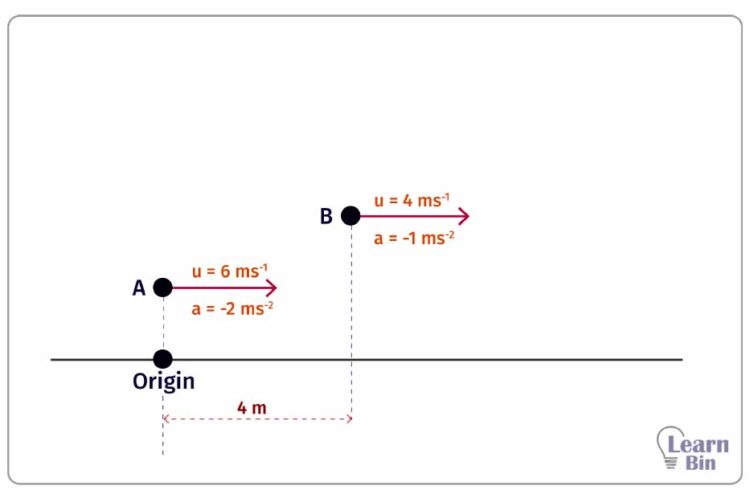
| Time (s) | Distance (m) | ||
| Object A | Object B | ||
| 0 | 0 | 9 | |
| 1 | 5 | 7.5 | |
| 2 | 8 | 3 | |
| 3 | 9 | 4.5 | |
| 4 | 9 | 4.5 | |
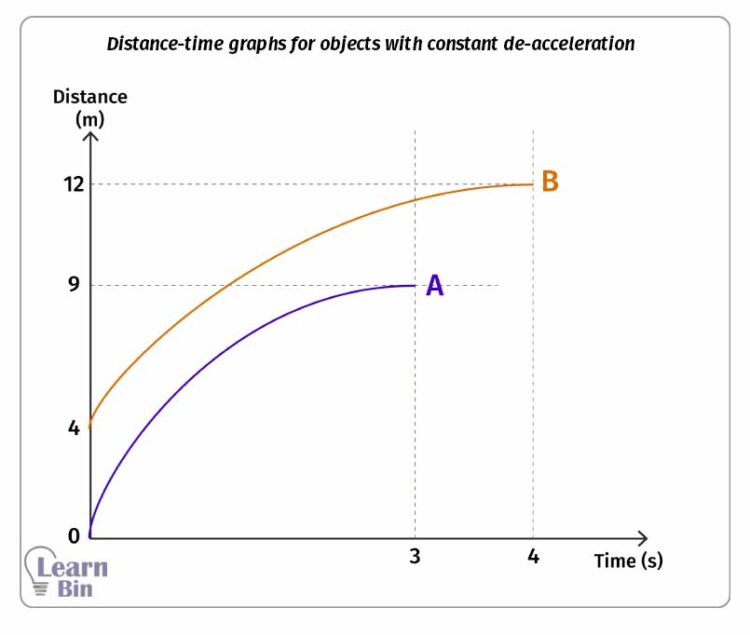

The cover image was created using an image from Pixabay